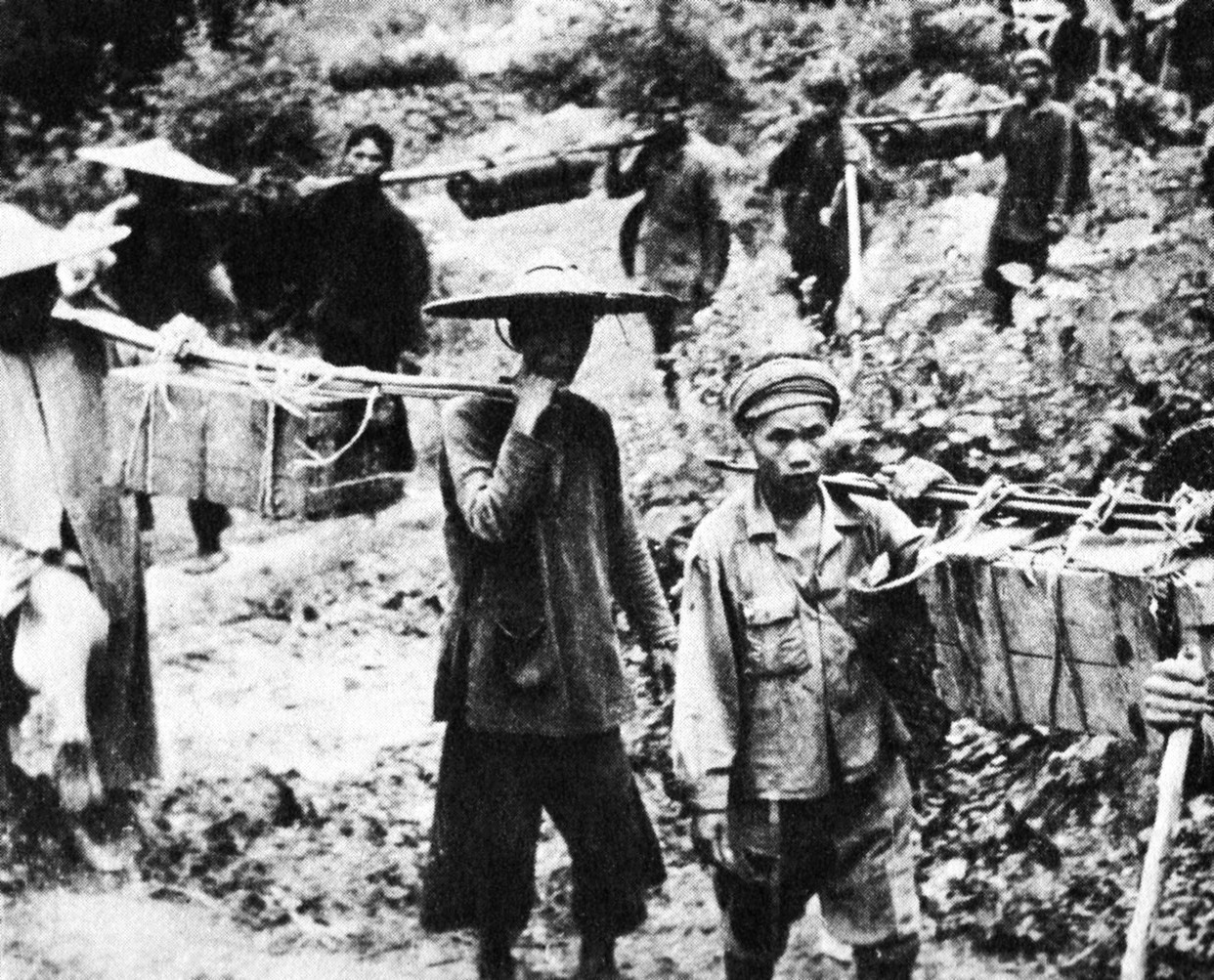|
Royal Laos Army
The Royal Lao Army (french: Armée royale du Laos – ARL), also designated by its anglicized title RLA, was the Land Component of the Royal Lao Armed Forces (FAR), the official military of the Kingdom of Laos during the North Vietnamese invasion of Laos and the Laotian Civil War between 1960 and 1975. History The ARL traced back its origins to World War II, when the first entirely Laotian military unit, the 1st Laotian Rifle Battalion ( – BCL), was raised early in 1941 by the Vichy French colonial authorities. Intended to be used on internal security operations to bolster the local colonial constabulary force, the "Indigenous Guard" (), the 1er BCL did not see much action until after March 9, 1945, when the Japanese Imperial Army forcibly seized control of French Indochina from France, including Laos. The battalion then retreated into the mountains, where they linked with the Laotian irregular guerrilla fighters () operating there. These guerrillas were supplied, train ... [...More Info...] [...Related Items...] OR: [Wikipedia] [Google] [Baidu] |
Flag Of Laos (1952–1975)
The flag of Laos (Lao language, Lao: ທຸງຊາດລາວ; ''thungsad Lāo'') consists of three horizontal stripes, with the middle stripe in blue being twice the height of the top and bottom red stripes. In the middle is a white disc, the diameter of the disc is the height of the blue stripe. The flag ratio is 2:3. The flag was first adopted in 1945 under the short-lived Lao Issara government of 1945–46, then by the Pathet Lao. It is one of the two flags of a currently communist country (the other being Flag of Cuba, Cuba) that currently does not use any communist symbolism. The current flag was adopted on December 2, 1975, when it became a socialist state. The royal flag before 1975 remains in use by a number of Laotian diaspora. Overview This current flag replaced the red flag, with the triple-headed white elephant Airavata on a pedestal beneath a parasol, which had been the flag of the 19th century Kingdom of Luang Phrabang. The flag had continued to be used when t ... [...More Info...] [...Related Items...] OR: [Wikipedia] [Google] [Baidu] |
North Vietnamese Invasion Of Laos
North Vietnam supported the Pathet Lao to fight against the Kingdom of Laos between 1958–1959. Control over Laos allowed for the eventual construction of the Ho Chi Minh Trail that would serve as the main supply route for enhanced NLF (the National Liberation Front, the Vietcong) and NVA (North Vietnamese Army) activities in the Republic of Vietnam. As such, the support for Pathet Lao to fight against Kingdom of Laos by North Vietnam would prove decisive in the eventual communist victory over South Vietnam in 1975 as the South Vietnamese and American forces could have prevented any NVA and NLF deployment and resupply if these only happened over the 17th Parallel, also known as the Demilitarized Zone (DMZ), a narrow strip of land between North and South Vietnam that was closely guarded by both sides. It also helped the Pathet Lao win against the Kingdom of Laos, even though the Kingdom of Laos had American support. Prelude to conflict Souvanna Phouma announced that, with t ... [...More Info...] [...Related Items...] OR: [Wikipedia] [Google] [Baidu] |
Nazi Germany
Nazi Germany (lit. "National Socialist State"), ' (lit. "Nazi State") for short; also ' (lit. "National Socialist Germany") (officially known as the German Reich from 1933 until 1943, and the Greater German Reich from 1943 to 1945) was the German state between 1933 and 1945, when Adolf Hitler and the Nazi Party controlled the country, transforming it into a dictatorship. Under Hitler's rule, Germany quickly became a totalitarian state where nearly all aspects of life were controlled by the government. The Third Reich, meaning "Third Realm" or "Third Empire", alluded to the Nazi claim that Nazi Germany was the successor to the earlier Holy Roman Empire (800–1806) and German Empire (1871–1918). The Third Reich, which Hitler and the Nazis referred to as the Thousand-Year Reich, ended in May 1945 after just 12 years when the Allies defeated Germany, ending World War II in Europe. On 30 January 1933, Hitler was appointed chancellor of Germany, the head of gove ... [...More Info...] [...Related Items...] OR: [Wikipedia] [Google] [Baidu] |
Allies Of World War II
The Allies, formally referred to as the United Nations from 1942, were an international military coalition formed during the Second World War (1939–1945) to oppose the Axis powers, led by Nazi Germany, Imperial Japan, and Fascist Italy. Its principal members by 1941 were the United Kingdom, United States, Soviet Union, and China. Membership in the Allies varied during the course of the war. When the conflict broke out on 1 September 1939, the Allied coalition consisted of the United Kingdom, France, and Poland, as well as their respective dependencies, such as British India. They were soon joined by the independent dominions of the British Commonwealth: Canada, Australia, New Zealand and South Africa. Consequently, the initial alliance resembled that of the First World War. As Axis forces began invading northern Europe and the Balkans, the Allies added the Netherlands, Belgium, Norway, Greece, and Yugoslavia. The Soviet Union, which initially had a nonaggression pa ... [...More Info...] [...Related Items...] OR: [Wikipedia] [Google] [Baidu] |
_in_art_01.jpg)

